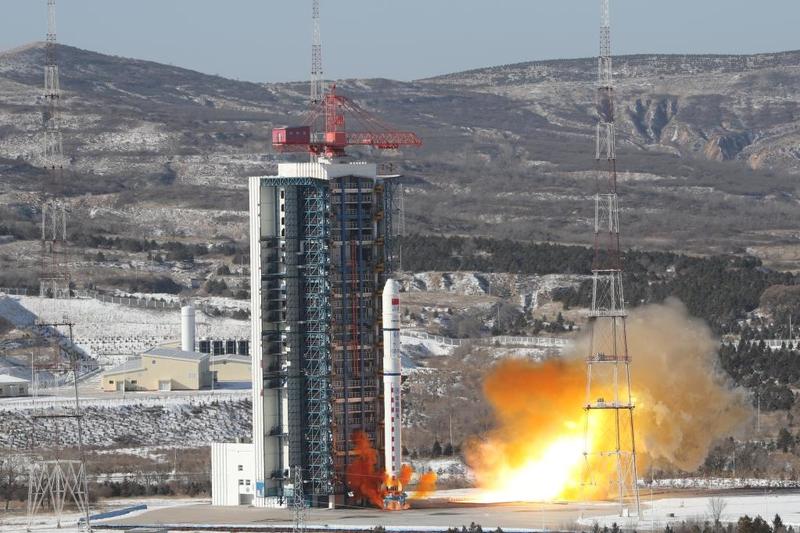 A Long March-2D rocket carrying 14 new satellites blasts off from the Taiyuan Satellite Launch Center in north China's Shanxi province, Jan 15, 2023. (WANG XIAOHU / XINHUA)
A Long March-2D rocket carrying 14 new satellites blasts off from the Taiyuan Satellite Launch Center in north China's Shanxi province, Jan 15, 2023. (WANG XIAOHU / XINHUA)
TAIYUAN - China successfully launched a Long March-2D rocket on Sunday, sending 14 new satellites into space.
The rocket blasted off from the Taiyuan Satellite Launch Center in north China's Shanxi province at 11:14 am (Beijing Time).
The satellites, including Qilu-2 and Qilu-3, have entered their planned orbits.
Qilu-2 and Qilu-3 are a high-resolution optical satellite and a wide-swath optical satellite, respectively, with payloads of optical-imaging devices for Earth observation
ALSO READ: China's commercial rocket CERES-1 Y5 launches 5 satellites
Qilu-2 and Qilu-3 are a high-resolution optical satellite and a wide-swath optical satellite, respectively, with payloads of optical-imaging devices for Earth observation.
They will provide east China's Shandong province with remote sensing services for land survey, agriculture, forestry, environmental protection, and disaster prevention and reduction. They will also work in coordination with the in-orbit Qilu-1 satellite.
This was the 462nd flight mission using the Long March rocket series.
The Long March-2D rocket was developed by the Shanghai Academy of Spaceflight Technology, a subsidiary of the China Aerospace Science and Technology Corporation.
READ MORE: China launches new test satellites via Kuaizhou-1A carrier rocket
Known for its reliability and adaptability, this rocket can meet multiple launching demands for a single satellite and series satellites in series-or-parallel layouts aboard the rocket. In this mission, it carried 14 satellites from 7 different developers.


